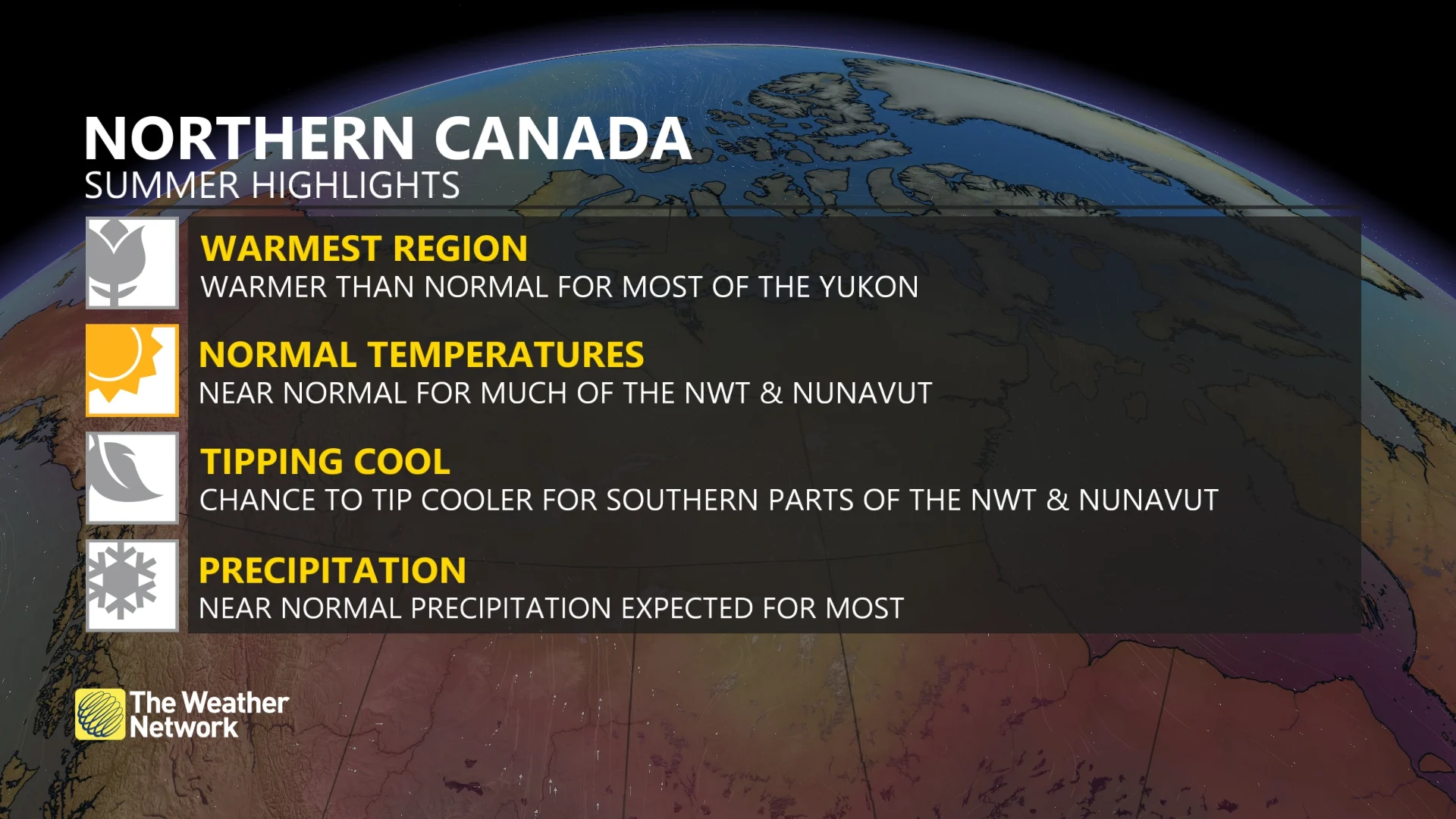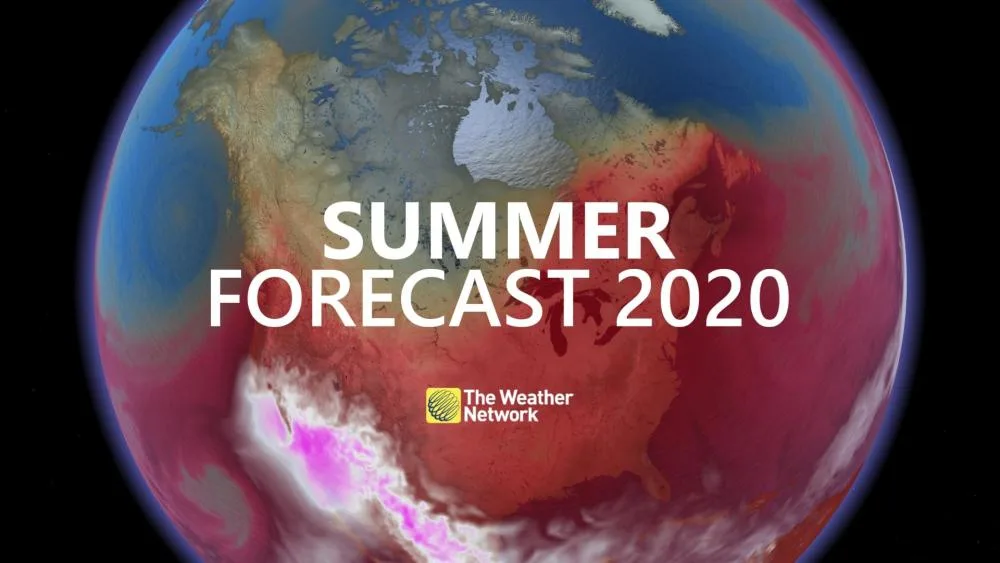
Welcome to summer, Canada! Here's what weather you can expect this season
The Weather Network's official 2020 Summer Forecast reveals what Canada can expect this season.
After a sluggish spring, summer is finally here! Our Summer Forecast highlights an abundance of warm weather across most of Canada with near normal or above normal temperatures expected for much of the country.
However, we do not expect that this summer will be an all-out scorcher with relentless heat and humidity. While heat waves are likely, periods of more refreshing weather will provide relief from the heat at times.
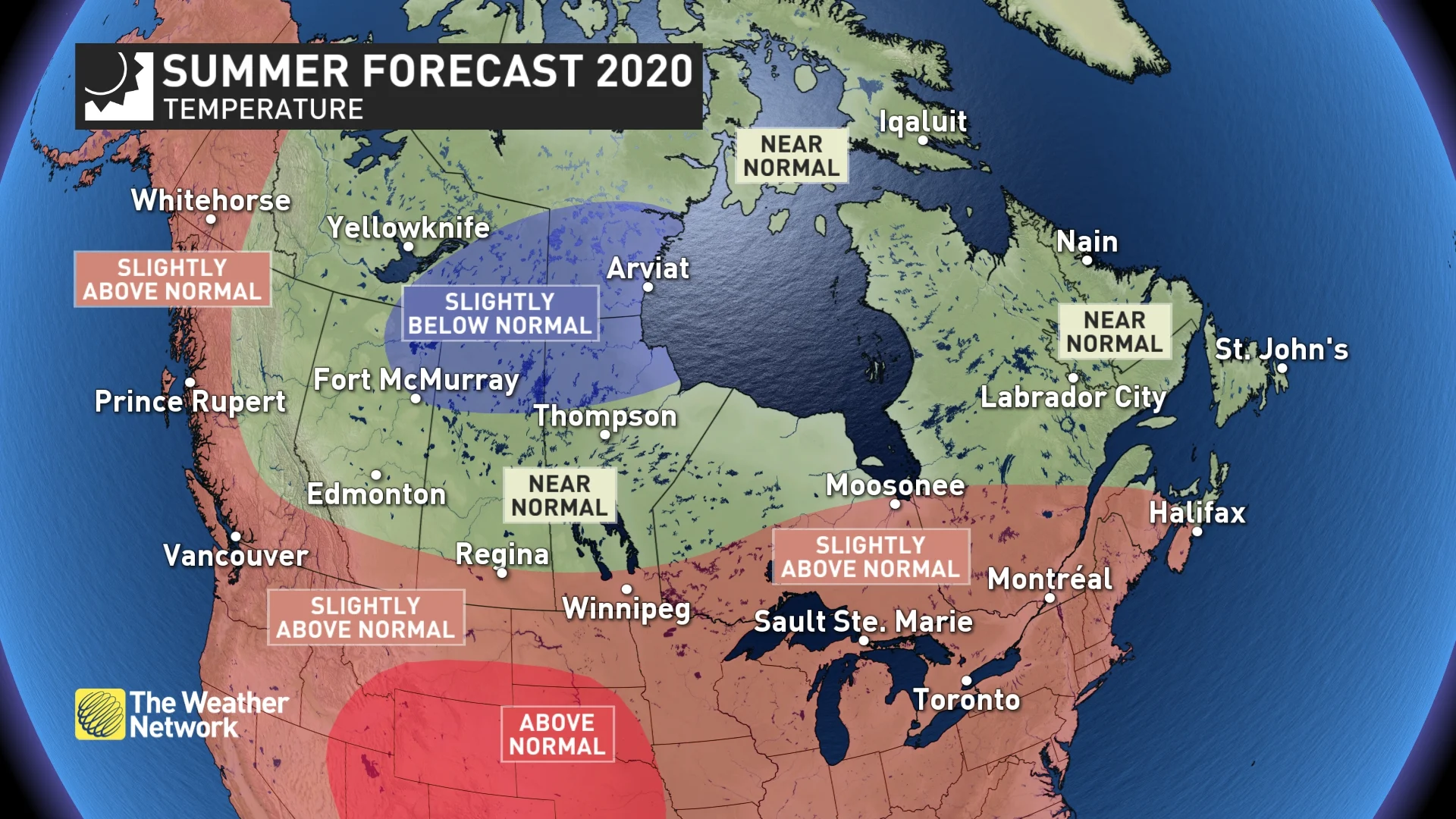
Most of Canada should receive close to normal amounts of rainfall during the summer. However, an active pattern is expected across parts of the Prairies, northwestern Ontario, and into parts of the Great Lakes region with numerous thunderstorms and above average rain totals.
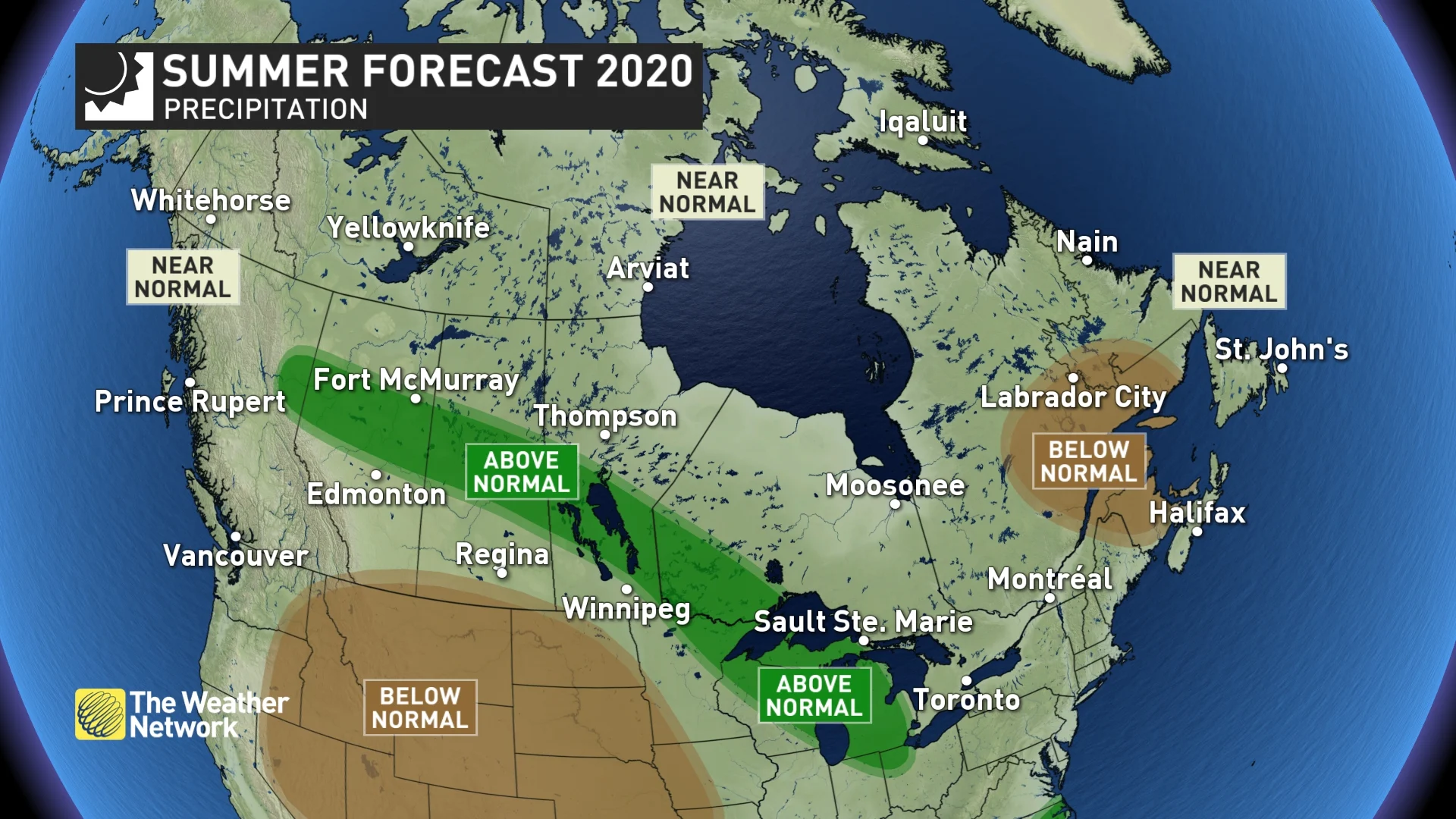
A dry summer is expected for much of eastern Quebec and into parts of the Maritimes. However, an active tropical season is expected, and any systems that tap into tropical moisture will have the potential to bring excessive rainfall and bring the final numbers to near normal, despite extended periods of dry weather for most of the summer.
It’s important to keep in mind that summer precipitation is notorious for being highly variable over short distances, and it is inevitable that localized areas will miss out on the showers and thunderstorms that occur in surrounding areas. In addition, localized storms can bring torrential rain to areas where drought dominates a season.
Below is a more detailed look at the conditions that we expect across Canada this summer:
BRITISH COLUMBIA
Summer has gotten off to a slow start across British Columbia, with temperatures on the cool side of normal so far during June and additional periods of cooler weather are likely into early July. We still expect that very warm weather will dominate during the heart of summer, especially across southern and western parts of the province. However, we must admit this is the part of the summer temperature forecast where we are currently the most uncertain.
There are also signs that the summer heat could come to an early end with the potential for cooler than normal temperatures to conclude the season, especially across northeastern parts of the province. Near normal rainfall is expected along with the typical risk for wildfires.
WATCH BELOW: COULD RING OF FIRE PATTERN MEAN MORE STORMS FOR B.C.?
ONTARIO & QUEBEC
A very warm and humid summer is expected, as July and August will feature extended periods of hot, sunny and dry weather. However, oppressive heat will not dominate the entire summer. Periods of cooler weather will break up the heat at times, and thunderstorms will help to deliver much-needed rain, which could be locally excessive.
WATCH BELOW: HOW LONG WILL ONTARIO’S HOT AND DRY PATTERN CONTINUE?
An active storm track is expected into the Great Lakes region, but it is possible that the storm track will stay primarily just south and west of the Canada/U.S. border. If that occurs, then southern Ontario and southern Quebec will see a dry summer. However, if the active storm track shifts further to the north and east, and cuts across southern Ontario, then we will see a wetter summer for parts of the region.
A strong finish to summer is expected with warm weather continuing through much of September.

ALBERTA
A typical summer is expected across most of Alberta with changeable conditions. While periods of hot, sunny and dry weather are likely, shots of cooler cooler weather at times will offset the heat and bring near normal temperatures to most of the province. However, southern areas are expected to tip to the warm side of normal.
After a stormy June, we expect that an active storm track will continue to bring above normal rainfall to areas near and north of the Yellowhead Highway during July and August. A cooler summer is expected across far northern areas, especially late in the summer when the weather could turn colder than normal across most of the province.
WATCH BELOW: WET PATTERN COULD SPELL TROUBLE FOR FARMERS
SASKATCHEWAN AND MANITOBA
A typical summer is expected across most of the region, but we expect that southern areas will be warmer than normal. A very hot summer is expected across much of the central United States, and at times, that hot weather will spread north across the Canadian Prairies. However, periods of cooler weather will offset the heat across most of the region, except for southernmost areas.
A dry summer is expected near the international border, but an unsettled and stormy pattern will continue at times further to the north with the potential for above normal rainfall for areas near and north of the Yellowhead Highway and through the interlake region of Manitoba. A cooler summer is expected across far northern areas and cooler weather could spread into western parts of the region later in August.
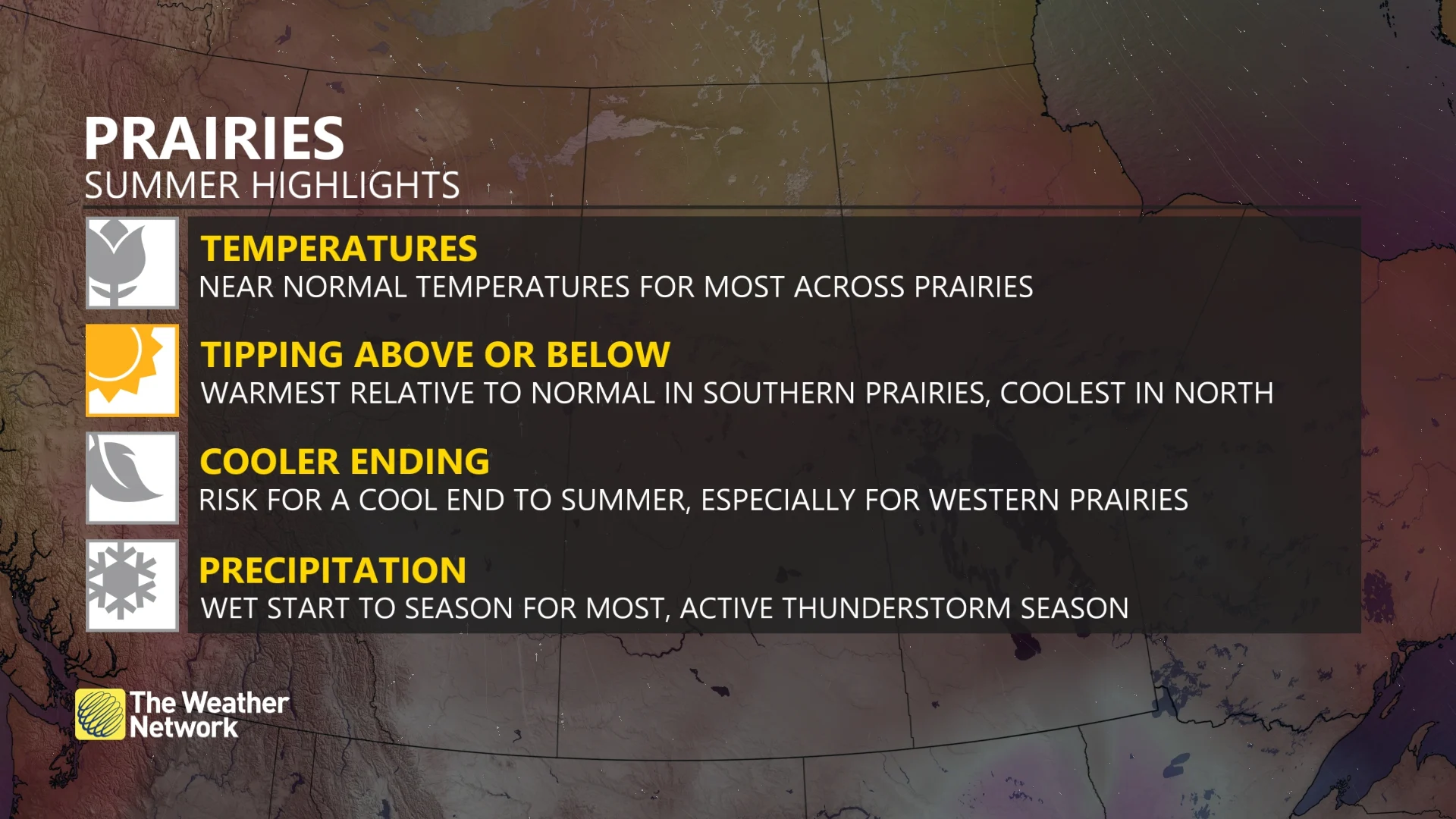
ATLANTIC CANADA
A warm summer is expected across the region with near normal to slightly above normal temperatures and abundant sunshine during late June, July and August. Extended periods of dry weather are expected, especially across the Maritimes. However, we are also closely watching the tropics as a very active hurricane season is expected.
WATCH BELOW: AFTER A SLUGGISH START, WILL TEMPERATURES REBOUND IN ATLANTIC CANADA?
Any system that taps into tropical moisture will have the potential to bring excessive rainfall and bring the final totals to near normal, especially across Nova Scotia and Newfoundland. However, if the tropical systems bypass the region, then the dry weather will be more extensive.
WATCH BELOW: WARMER WATERS COULD MEAN MORE HURRICANE ACTIVITY
NORTHERN CANADA
A warmer than normal summer is expected for most of the Yukon, but near normal to slightly below normal temperatures are expected for the N.W.T. and Nunavut. Near normal precipitation is expected across most of the region, but that certainly does not eliminate the threat for wildfires.
